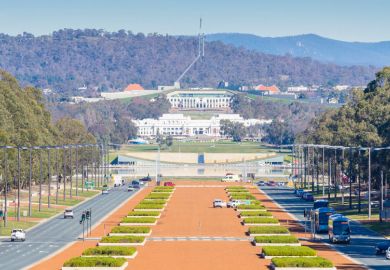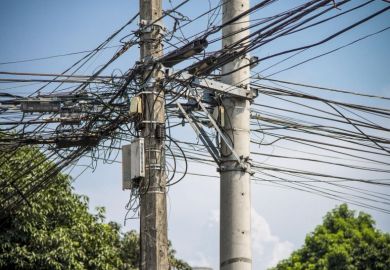Another Australian university has announced plans to jettison scores of staff, saying funding reforms approved by parliament this week will exacerbate the financial troubles ushered by the pandemic.
Melbourne’s Swinburne University of Technology said it expects to make between 100 and 150 staff redundant over the next few months as it grapples with a deficit of at least A$45 million (£24 million) this year.
Vice-chancellor Pascale Quester told staff that the crisis had been caused mainly by a A$75 million reduction in revenue triggered by the pandemic. But she said the Jobs-Ready Graduates (JRG) package was also a factor because it would reduce margins from degrees in Swinburne’s core areas of science, technology and engineering.
“These courses [are] likely to see significant employment growth in the coming years [but] there will be less total funding per student,” Professor Quester said.
A key objective of the JRG package is to encourage more students to train in STEM disciplines – considered areas of industry need – by lowering tuition fees for relevant courses. But critics say that the changes could be self-defeating because the government is not increasing course subsidies sufficiently to offset the lower student contributions.
Consequently, per-student revenue for science, engineering and mathematics degrees is expected to decline by more than 16 per cent.
When the legislation passed parliament on 19 October, the Australian Academy of Technology and Engineering (ATSE) highlighted the risk of reducing institutional income for favoured courses. ATSE said that universities were already cutting STEM courses and jobs because of the coronavirus.
Chief executive Kylie Walker said that while the reform package included transitional arrangements to cushion its financial impacts on universities, total teaching grants would fall below current levels after the lifeline expired in 2023.
“We will be closely monitoring university enrolments in 2021 to see if the reforms incentivise students to choose STEM courses, and for any reduction in the number of STEM courses on offer,” Ms Walker said.
The JRG changes add to an already unpredictable financial landscape for Australian universities, some of which have revised estimates of their losses downwards after attracting better than expected enrolments in late 2020 and 2021. The boost has come both from international students who have reconciled themselves to online education and Australians turning to study during the employment downturn.
But Professor Quester warned that extra enrolments were not guaranteed. “Next year will continue to be challenging as all other Victorian universities turn their focus on the domestic student market,” she said.
“Competition will reach unprecedented levels and our fitness and financial resilience will be put to the test.”
Register to continue
Why register?
- Registration is free and only takes a moment
- Once registered, you can read 3 articles a month
- Sign up for our newsletter
Subscribe
Or subscribe for unlimited access to:
- Unlimited access to news, views, insights & reviews
- Digital editions
- Digital access to THE’s university and college rankings analysis
Already registered or a current subscriber?










